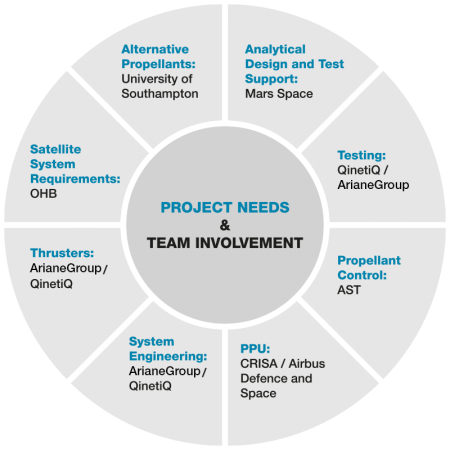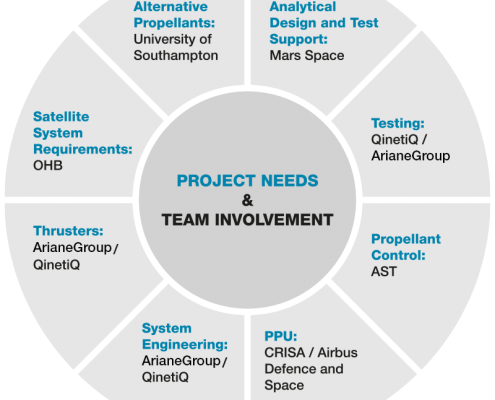Objective
The GIESEPP (Gridded Ion Engine Standardised Electric Propulsion Platform) project will develop, build and test to TRL5 the first European Plug and Play Gridded Ion Engine System to operate ArianeGroup and QinetiQ Space Ion Engines for LEO, GEO and Space Exploration Missions.
What does Gridded Ion Engine Technologies stand for?
Gridded ion thrusters are part of the electrostatic electric propulsion thrusters. The ion thruster generate thrust in two steps. In the first step ion thrusters employ a variety of plasma generation techniques to ionize a large fraction of the propellant. In the second step the ionized fraction of the propellant is accelerated in an electrostatic field of the grid system. The ion acceleration in a grid system is the common feature of all gridded ion engines. An ion thruster consists of basically three components: the plasma generator, the accelerator grids, and the neutralizer cathode.
Organisation
GIESEPP project needs and team Involvement.
The project is structured based on the following team member responsabilities:
- Satellite System Requirements:
OHB - Thrusters:
ArianeGroup/ QinetiQ - System Engineering:
ArianeGroup/ QinetiQ - PPU:
Airbus Defence and Space / Crisa - Propellant Control:
AST - Testing:
QinetiQ / ArianeGroup - Analytical Design and Test Support:
Mars Space - Alternative Propellants:
University of Southampton - Sensor improvement
STS – Sensor Technik Sirnach AG
Schedule
The project has an overall duration of 54 months and is subdivided in 5 Phases.
Phase 1 (months 1–7)
Mission Scenarios, Platforms, Requirements and Gap Identification
Phase 2 (months 7–16)
Electric Propulsion System Definition
Phase 3 (months 16–24)
Electric Propulsion System Development and Cost Optimization
Phase 4 (months 24–40)
Build, Procure, Assemble and Prepare Standardised Tests
Phase 5 (months 40–54)
Test and Analysis



